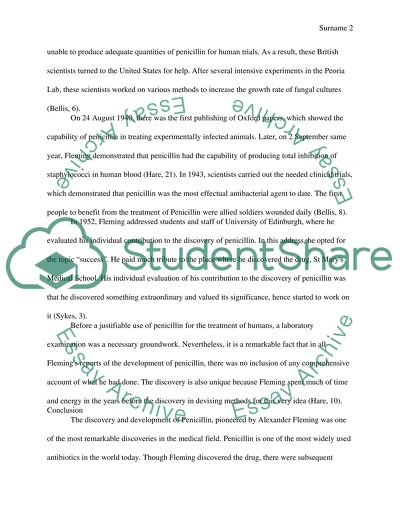History of penicillin Essay Example | Topics and Well Written Essays - 500 words. Retrieved from https://studentshare.org/chemistry/1581483-history-of-penicillin
History of Penicillin Essay Example | Topics and Well Written Essays - 500 Words. https://studentshare.org/chemistry/1581483-history-of-penicillin.


